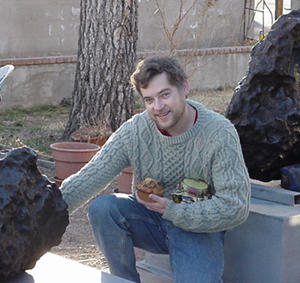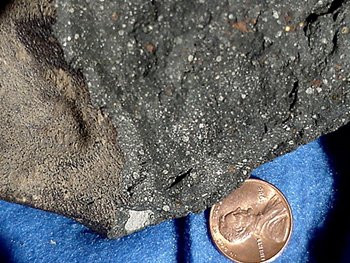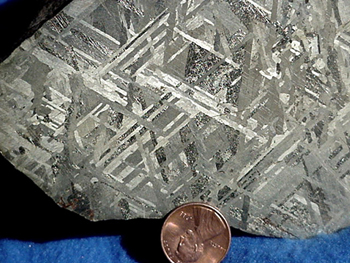G446 / G546 Meteorites
Winter Term 2024
MF 2:00 - 3:50 pm, CH 69
A. Ruzicka (+ big iron meteorites + muffin)

e-mail: ruzickaa@pdx.edu
 |  |
Images of two very different meteorites, the Murchison (CM2) chondrite at left, and the Henbury (IIIAB) iron at right [images: A. Ruzicka].
Murchison was derived from an asteroid that never melted,
and which was rich in water and organic
materials. These organic materials provide evidence for pre-biotic
synthesis of organic molecules,
which appear to have formed originally in the interstellar medium.
Bright spots in the meteorite are chondrules and refractory inclusions;
fusion crust is the
brown coating at left.
In contrast, Henbury was derived from the core of a melted
asteroid.
The core cooled very slowly (roughly 1 degree C per million years!)
owing to its deep burial in the
parent body. This slow cooling enabled the low-nickel metal
alloy mineral kamacite to exsolve from the
high-nickel metal alloy mineral taenite, producing the intergrowth
pattern (Widmanstatten texture) obvious
in the image.
Course information
- Syllabus (Dec. 28, 2023)
- Reading list (Dec. 28, 2023)
- Meteorite gallery. Images from the web of different meteorite types. (Jan. 2, 2024)
Other reference materials
- Cascadia Meteorite Laboratory website. This explains how to identify meteorites, and gives other information.